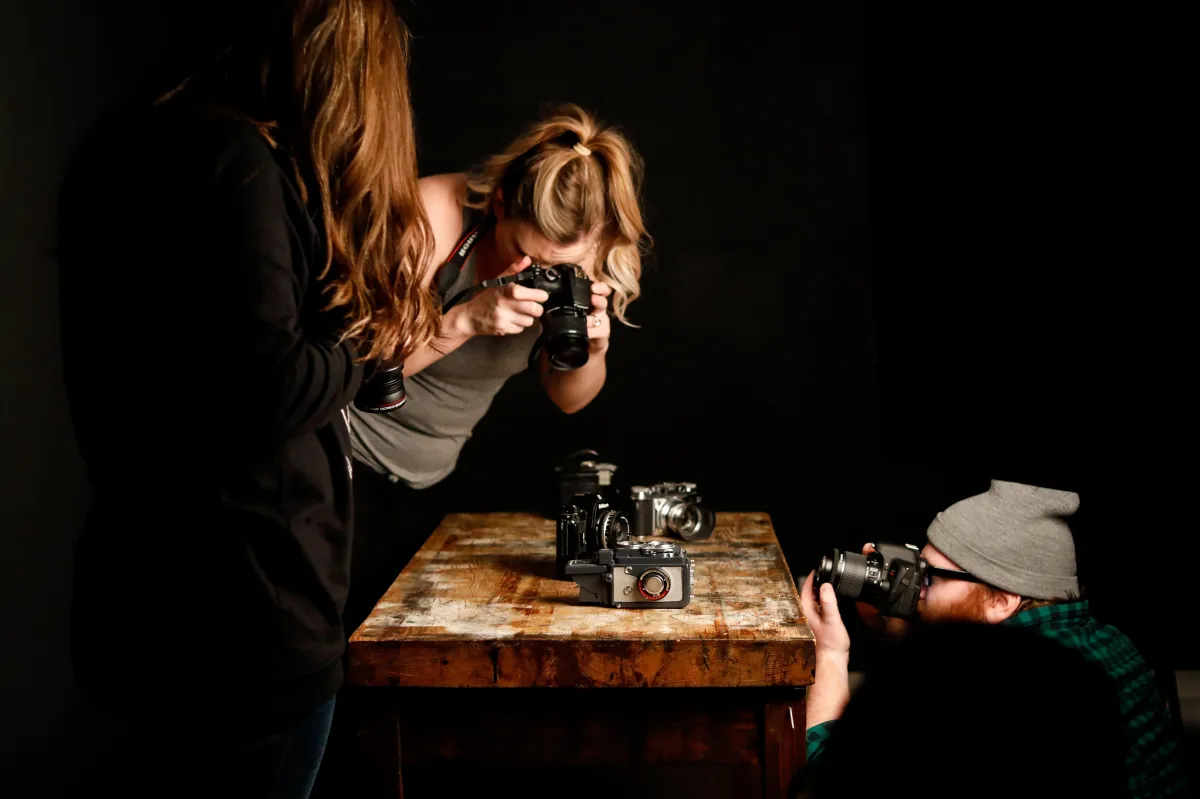Enter contests. Win big!
Your one stop shop for up-to-date online video contests! Enter to win big today!

New Contests Open NOW!
Enter these contests before it's too late!

Mastering the Art of Cinematography: Tips and Techniques for Aspiring Filmmakers
Cinematography is the visual language of filmmaking, and mastering this art form is crucial for aspiring filmmakers seeking to tell compelling stories through the lens. In this blog post, we'll delve into the world of cinematography, uncovering valuable tips and techniques that can transform your filmmaking journey. Whether you're a novice or a seasoned filmmaker, these insights will help you elevate your craft and create visually stunning cinematic experiences.
Understand the Basics:
Camera Fundamentals: Start by mastering the basics of your camera. Learn about aperture, shutter speed, ISO, and white balance. Understanding these fundamental elements is essential for achieving the desired visual style in your films.
Frame Rate Choices: Experiment with different frame rates to evoke specific emotions. While 24 frames per second (fps) is a cinematic standard, higher frame rates can convey a sense of realism, while slower frame rates create dreamy, surreal effects.
Composition Techniques:
Rule of Thirds: Apply the rule of thirds to frame your shots effectively. Divide your frame into a 3x3 grid and position key elements along the grid lines or at their intersections for visually dynamic compositions.
Leading Lines: Utilize leading lines to guide the viewer's eye through the frame. Whether it's a road, a hallway, or architectural features, leading lines add depth and direct attention to focal points.
Lighting Mastery:
Natural vs. Artificial Lighting: Understand the nuances of natural and artificial lighting. Experiment with natural light for a soft, organic feel, and learn to manipulate artificial light sources to create mood and atmosphere.
Three-Point Lighting: Master the three-point lighting setup—key light, fill light, and backlight. This classic technique enhances the subject's visibility while creating dimension and separation from the background.
Cinematic Movement:
Dolly Shots and Tracking: Experiment with dolly shots and tracking movements to add cinematic flair. Whether using a physical dolly or a stabilizer, smooth and controlled movements can enhance the storytelling and visual appeal of your shots.
Steadicam and Handheld Shots: Integrate steadicam or handheld shots for a more dynamic and immersive feel. These techniques can convey urgency, tension, or intimacy, depending on the narrative context.
Color Grading Techniques:
Embrace Color Psychology: Understand the psychological impact of color. Experiment with color grading to evoke specific emotions; warm tones can convey comfort, while cooler tones may evoke suspense or melancholy.
Consistent Color Palette: Maintain a consistent color palette throughout your film for visual coherence. This includes not only the grading of individual shots but also ensuring a harmonious color scheme across the entire film.
Framing and Aspect Ratios:
Aspect Ratio Choices: Explore different aspect ratios to enhance the visual storytelling. While 16:9 is common for standard productions, experimenting with wider or narrower ratios can offer a unique cinematic look.
Creative Framing Techniques: Employ creative framing techniques to add visual interest. Experiment with framing within frames, wide shots for expansive landscapes, and close-ups for emotional impact.
Effective Use of Sound:
Sound as a Cinematic Tool: Recognize the power of sound in enhancing the cinematic experience. Use sound design, music, and ambient noise strategically to complement and elevate the visual narrative.
Sync Sound Techniques: Master the art of syncing sound to your visuals seamlessly. Quality audio is as vital as stunning visuals for a truly immersive cinematic experience.
Continuous Learning and Inspiration:
Study Cinematic Masters: Immerse yourself in the works of cinematic masters. Study films from different genres, eras, and cultures to gain a diverse perspective and draw inspiration for your own projects.
Stay Updated on Technology: Keep abreast of advancements in filmmaking technology. The industry evolves rapidly, and staying informed about the latest equipment and techniques can give your work a contemporary edge.
Cinematography is a dynamic and ever-evolving craft that requires a combination of technical expertise, creativity, and a keen eye for storytelling. By mastering the tips and techniques outlined in this guide, you'll be well on your way to creating visually stunning and emotionally resonant cinematic experiences. Embrace the art of cinematography as a lifelong learning journey, and let your passion for storytelling shine through every frame you capture. Happy filmmaking!
One or more of the links above are affiliate links, meaning, at no additional cost to you, we will earn a slight commission if you click through and make a purchase. Each of these products is chosen by a trusted member of our team.
Follow Online Video Contests
Never miss a new contest alert! Follow us on social media to stay up to date on everything OVC.



Copyright 2023 | Online Video Contests
Contact
partnerships@onlinevideocontests.com
